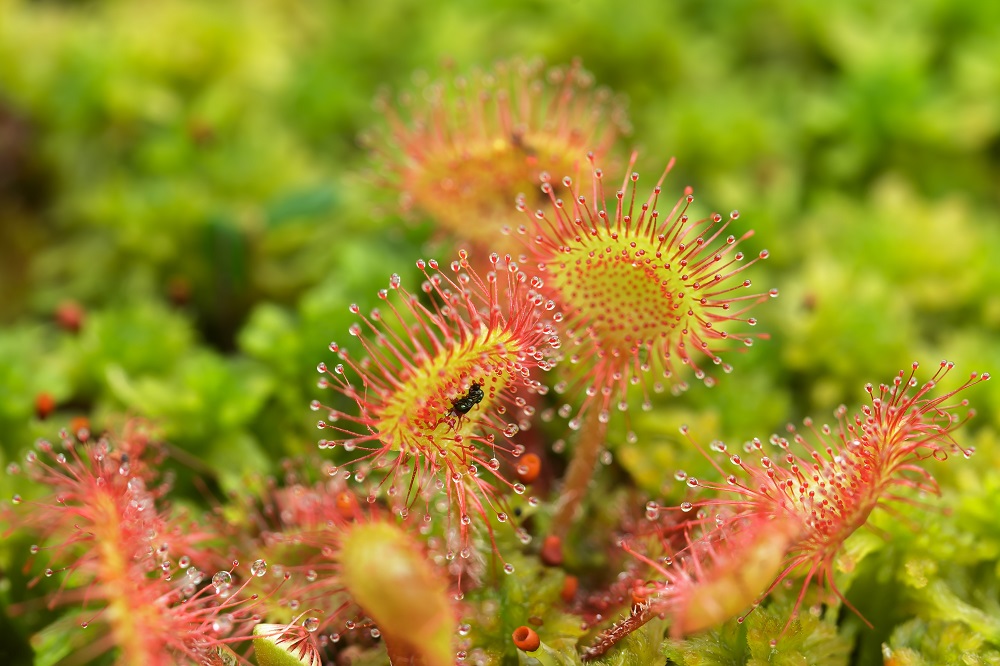A peat bog is a place where peat is deposited – an organic formation formed almost exclusively from plant debris (mainly: the Sphagnum moss), in an environment saturated with water and in anaerobic conditions.
Depending on where the water that feeds the bog comes from and what chemical parameters it has, we distinguish different types of peatbogs, with their characteristic vegetation and the type of peat deposits. For example, raised bogs are those that are fed only by water from precipitation (rain, snow) and which have developed in a highly acidic, nutrient-poor environment. They most often occur in watershed areas.
The peat layer grows very slowly – about 1 mm per year. The existing peat bogs are storages of carbon trapped in plant debris for millennia. It is estimated that in our climate zone, one hectare of a healthy, living bog accumulates annually approx. 300 kg of carbon in organic compounds produced during photosynthesis. For this purpose, it must absorb 1100 kg of carbon dioxide from the atmosphere.
Peat bogs also play a second extremely important role: they stabilize the hydrological conditions in a given area. They are natural retention reservoirs that regulate the outflow of water. This is an extremely important property, especially in mountainous conditions - they act like a huge natural “sponge” and can stop or reduce the risk of flooding while, on the other hand, gradually returning the water in drought conditions. Water retention is becoming an increasingly urgent need in the face of regularly occurring periods of drought or short, torrential rains causing a flood risk.
But peatlands are not only carbon stores, peat deposits or water storage reservoirs. They are also fascinating ecosystems with an amazing world of plants and animals. An important component of peat bogs are peat mosses (genus Sphagnum); thanks to their specialized structure, they store huge amounts of water in their tissues (even much more than 10 times their dry weight – thanks to which, as mentioned above, bogs are huge and very effective "sponges"). In addition, peatlands are home to, among others, rare insectivorous plants, such as sundews, as well as cranberries, for which peat bogs are a natural habitat.

Round-leaved sundew. Source: Freepik
In the past, peat was a valuable source of energy, now it is used in horticulture and plant cultivation. The slow pace of peat formation means that it should be treated as a non-renewable resource.
Unfortunately, peat bogs are one of the fastest-disappearing ecosystems in our climate zone. Saturated with water and overgrown with water-logged mosses, they cannot be used as arable lands or pastures or for forestry. Therefore, many bogs have been or still are regularly drained.
Due to their outstanding natural values and the role they play for humans, they truly deserve special protection.




